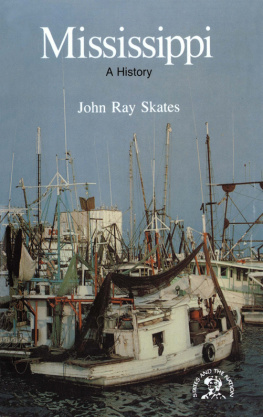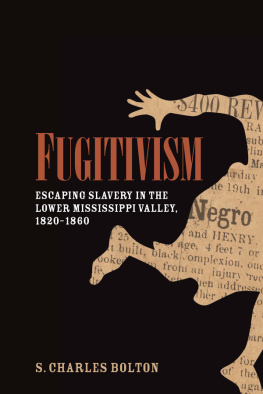Charles Sealsfield - The Americans as They Are: Described in a Tour through the Valley of the Mississippi
Here you can read online Charles Sealsfield - The Americans as They Are: Described in a Tour through the Valley of the Mississippi full text of the book (entire story) in english for free. Download pdf and epub, get meaning, cover and reviews about this ebook. year: 2014, publisher: Duke Classics, genre: Art. Description of the work, (preface) as well as reviews are available. Best literature library LitArk.com created for fans of good reading and offers a wide selection of genres:
Romance novel
Science fiction
Adventure
Detective
Science
History
Home and family
Prose
Art
Politics
Computer
Non-fiction
Religion
Business
Children
Humor
Choose a favorite category and find really read worthwhile books. Enjoy immersion in the world of imagination, feel the emotions of the characters or learn something new for yourself, make an fascinating discovery.
- Book:The Americans as They Are: Described in a Tour through the Valley of the Mississippi
- Author:
- Publisher:Duke Classics
- Genre:
- Year:2014
- Rating:5 / 5
- Favourites:Add to favourites
- Your mark:
- 100
- 1
- 2
- 3
- 4
- 5
The Americans as They Are: Described in a Tour through the Valley of the Mississippi: summary, description and annotation
We offer to read an annotation, description, summary or preface (depends on what the author of the book "The Americans as They Are: Described in a Tour through the Valley of the Mississippi" wrote himself). If you haven't found the necessary information about the book — write in the comments, we will try to find it.
Austrian-born journalist and novelist Karl Anton Postl (who often wrote under the nom de plume Charles Sealsfield) made a splash with his German-language novels, many of which are regarded as key works of the Romantic era. However, his insightful travelogues and explorations of national identity also proved popular with readers and critics alike. This collection of essays recounts the authors journey through the Mississippi Valley in the early nineteenth century.
Charles Sealsfield: author's other books
Who wrote The Americans as They Are: Described in a Tour through the Valley of the Mississippi? Find out the surname, the name of the author of the book and a list of all author's works by series.
The Americans as They Are: Described in a Tour through the Valley of the Mississippi — read online for free the complete book (whole text) full work
Below is the text of the book, divided by pages. System saving the place of the last page read, allows you to conveniently read the book "The Americans as They Are: Described in a Tour through the Valley of the Mississippi" online for free, without having to search again every time where you left off. Put a bookmark, and you can go to the page where you finished reading at any time.
Font size:
Interval:
Bookmark:

Described in a Tour through the Valley of the Mississippi
First published in 1828
ISBN 978-1-63421-174-1
Duke Classics
2014 Duke Classics and its licensors. All rights reserved.
While every effort has been used to ensure the accuracy and reliability of the information contained in this edition, Duke Classics does not assume liability or responsibility for any errors or omissions in this book. Duke Classics does not accept responsibility for loss suffered as a result of reliance upon the accuracy or currency of information contained in this book.
Upwards of half a century has now elapsed since the independence ofthe United States became firmly established. During this period twogreat questions have been solved, exposing the fallacies of humancalculations, which anticipated only present anarchy and ultimatedissolution as the fate of the new Republics. The possibility of apeople governing themselves, and being prosperous and happy, time, thesure ordeal of all projects, has at length demonstrated. Their politicalinfancy is over, they are approaching towards manhood, and fullysensible of their strength, their first magistrate has ventured toutter those important words contained in his address of 1820: that"notwithstanding their neutrality, they would consider any attempt onthe part of the European Powers, to extend their system to any portionof THEIR hemisphere, as dangerous to their peace and safety; and thatthey could not admit of any projects of colonization on the part ofEurope." Thus, for the first time, they have asserted their right oftaking a part DE FACTO in the great transactions of European Powers, andpronounced their declaration in a tone, which has certainly contributedto the abandonment of those intentions which were fast ripening intoexecution.
The important influence of American liberty throughout the civilisedworld, has been already apparent; and more especially in France, in theSouth American revolutions, and in the commotions in Spain, Portugal,Naples, and Piedmont. These owe their origin, not to any instigation onthe part of the United States, but to the influence of their example inraising the standard of freedom, and more than all, to the success whichcrowned their efforts. Great has been on the other hand, the influenceof European politics on the North American nation. A party, existingsince the revolution, and extending its ramifications over the wholeUnited States, is now growing into importance, and guided by theprinciples of European diplomacy, is rooting itself deeper and deeper,drawing within its ranks the wealthy, the enlightened, the dissatisfied;thus adding every day to its strength. We see, in short, the principleof monarchy developing itself in the United States, and though it is notattempted to establish it by means of a revolution, which wouldinfallibly fail, there is a design to bring it about by that cunning,cautious, and I may add, American way, which must eventually succeed;unless the spirit of freedom be sufficiently powerful to neutralize thesubtle poison in its progress, or to triumph over its revolutionaryresults. There have occurred many changes in the United States withinthe last ten years. The present rulers have succeeded in so amalgamatingopinions, that whatever may be said to the contrary, only two partiesare now in existence. These are the monarchists, who would becomegovernors, and the republicans, who would not be governed.
The object proposed in the following pages has been to exhibit to theeyes of the European world, the real state of American affairs, divestedof all prejudice, and all party spirit. Adams on the whole is afavourite with Great Britain. This empire however, has no reason toadmire him; should his plans succeed, the cost to Great Britain would bethe loss of her last possession in North America. But as long as theAmerican Republic continues united, this unwieldy mass of twenty-fourstates can never become dangerous.
Of the different orders of society, there is yet little to be said, butthey are developing themselves as fast as wealth, ambition, luxury, andthe sciences on the one side, and poverty, ignorance, and indirectoppression on the other, will permit them. There, as every where else,this is the natural course of things. To show the state of society ingeneral, and the relative bearings of the different classes to eachother, and thus to afford a clear idea of what the United States reallyare, is the second object attempted in this work. To represent socialintercourse and prevailing habits in such a manner as to enable thefuture emigrant to follow the prescribed track, and to settle withsecurity and advantage to himself and to his new country; to afford himthe means of judging for himself, by giving him a complete view ofpublic and private life in general, as well as of each profession orbusiness in particular, is the third object here contemplated.
The capitalist, the merchant, the farmer, the physician, the lawyer, themechanic, cannot fail, I trust, to find adequate information respectingthe course which, on their settling in the Union, will be the mosteligible to pursue. Farther explanation I think unnecessary. He whowould consider the following condensed picture of Trans-atlantic societyand manners insufficient, would not be better informed, if I were toenlarge the work to twice its size. Such an objection would shew him tobe unfit to adventure in the character of a settler in a country whereso many snares will beset his path, and call for no small degree ofnatural shrewdness and penetration.
The city of Cincinnati is the largest in the state of Ohio: for the lasteight years it has left even Pittsburgh far behind. It is situated in39 5' 54" north latitude, and 7 31' west longitude, on the second bankof the Ohio, rising gradually and extending to the west, the north, andthe east, for a distance of several miles. The lower part of the citybelow the new warehouse, is exposed, during the spring tides, toinundations which are not, however, productive of serious consequences;the whole mass of water turning to the Kentuckian shore. The river ishere about a mile wide, and assumes the form of a half moon. When viewedfrom the high banks, the mighty sheet of water, rolling down in a deepbed, affords a splendid sight. In 1780, the spot where now stands one ofthe prettiest towns of the Union, was a native forest. In that year, thefirst attempt was made at forming a settlement in the country, byerecting a blockhouse, which was called Fort Washington, and wasenlarged at a subsequent period. In the year 1788, Judge Symmes laid outthe town, whose occupants he drew from the New England States.Successive attacks, however, of the Indians wearied them out, and thegreater part withdrew. The battle gained by General Wayne over thesenatives, tranquillised the country; and after the year 1794, Cincinnatirapidly improved. It became the capital of the western district, whichwas erected into a territorial government. When Ohio was declared anindependent state, in the year 1800, Cincinnati continued to be the seatof the legislature till 1806.
Fort Washington has since made room for peaceful dwellings. Their numberis at present 1560, with 12,000 inhabitants. The streets are regular,broad, and mostly well paved. The main street, which runs the length ofa mile from the court-house down to the quay, is elegant.Among thepublic buildings, the court-house is constructed in an extremely simplebut noble style; the Episcopalian, the Catholic, and the Presbyterianchurches, the academy and the United States' bank, are handsomebuildings. Besides these, are churches for Presbyterians, Lutherans,Methodists, Baptists, Swedenborghians, Unitarians, a Lancasterianschool, the farmers', the mechanics', and the Cincinnati banks, areading room with a well provided library, five newspaper printingoffices;among these papers are the Cincinnati Literary Gazette, and aprice currentand the land office for the southern part of the state.The colonnade of the theatre is, however, a strange specimen of thearchitectural genius of the backwoods. Among the manufacturingestablishments, the principal are,the steam mill on the river, asaw-mill, cloth and cotton manufactories, several steam engines, ironand nail manufactories, all on the steam principle. Cincinnati carrieson an important trade with New Orleans, and it may be considered as thestaple of the state. The produce of the whole state is brought toCincinnati, and shipped down the Ohio and Mississippi. The onlyimpediments to its uninterrupted trade, are the falls of the Ohio atLouisville, which obstruct the navigation during eight months in theyear. These obstacles are now on the point of being removed. The exportsfrom Cincinnati are flour, whisky, salt, hams, pork, beef, dried andfresh fruits, corn, &c.; the imports are cotton, sugar, rice, indigo,tobacco, coffee, and spices. The manufactured goods are generallybrought in waggons from Philadelphia to Pittsburgh, and dischargedthere. In order to improve the commerce of Cincinnati, an insurancecompany has been formed. There is a committee established for theinspection of vessels running between New Orleans and this place. Thereare a number of steam and other boats building at the present time. Forthe benefit of travellers, &c., a line of steam boats is establishedbetween Cincinnati and Louisville; and they start regularly every secondday, performing the voyage of 115 miles to Louisville in twelve, andback again in twenty hours.
Font size:
Interval:
Bookmark:
Similar books «The Americans as They Are: Described in a Tour through the Valley of the Mississippi»
Look at similar books to The Americans as They Are: Described in a Tour through the Valley of the Mississippi. We have selected literature similar in name and meaning in the hope of providing readers with more options to find new, interesting, not yet read works.
Discussion, reviews of the book The Americans as They Are: Described in a Tour through the Valley of the Mississippi and just readers' own opinions. Leave your comments, write what you think about the work, its meaning or the main characters. Specify what exactly you liked and what you didn't like, and why you think so.






